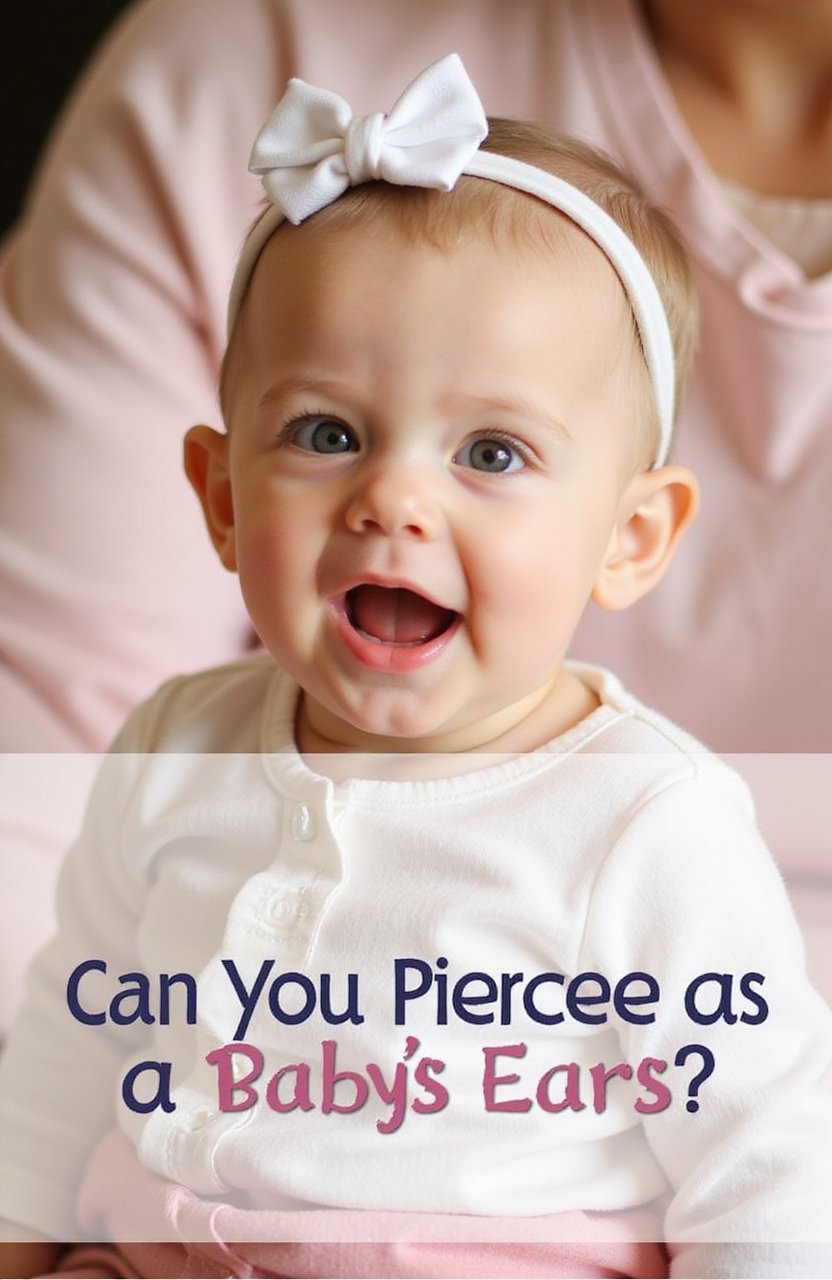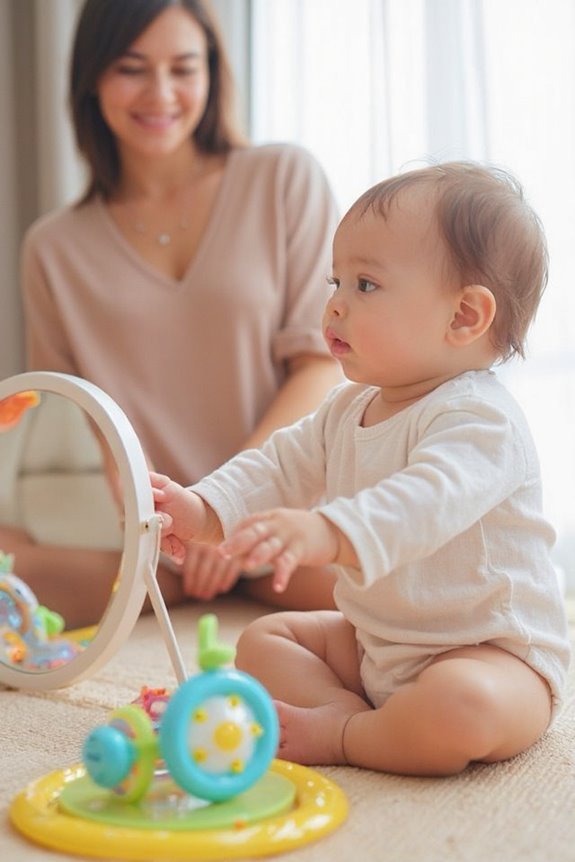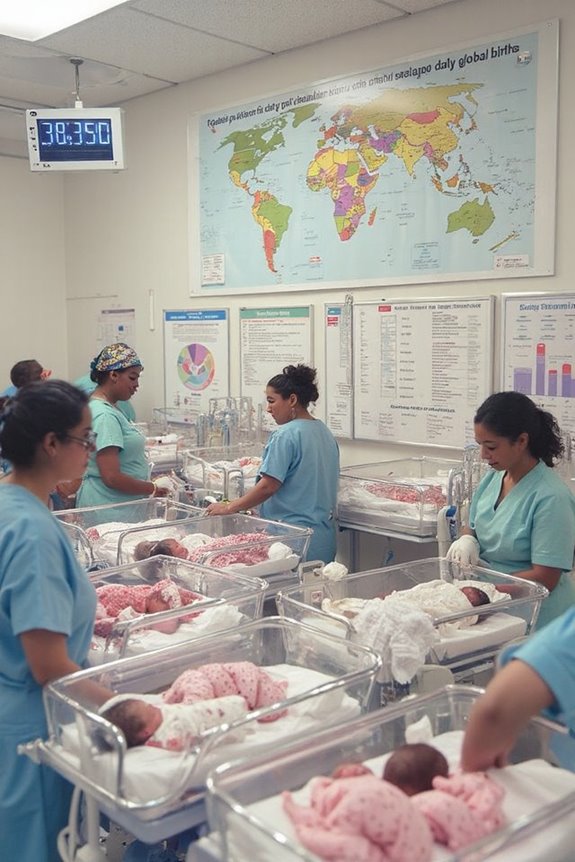There’s no universal minimum age for piercing a baby’s ears, but many pediatricians recommend waiting until after initial vaccinations at 2-3 months. Medical experts emphasize proper sterilization, gold post earrings, and screw-back closures to minimize risks. While some cultures traditionally pierce ears during infancy, the decision should balance cultural practices with safety considerations. I recommend consulting your child’s doctor for personalized advice based on your baby’s health status and vaccination schedule. The timing choice affects both safety and aftercare requirements.
Key Takeaways
- Most pediatricians recommend waiting until at least 3 months of age when the immune system is stronger.
- Consider delaying ear piercing until after initial vaccinations at 2, 4, and 6 months.
- For cultural traditions, many families safely pierce ears between birth and 9 months with proper precautions.
- Infants under 1 year typically experience faster healing with less touching of the piercing site.
- Regardless of age, ensure sterile equipment, gold post earrings, and a professional who uses proper techniques.
Minimum Age Recommendations From Medical Experts
While many parents are enthusiastic to pierce their baby’s ears, there’s no universally agreed-upon minimum age according to medical experts. The American Academy of Pediatrics (AAP) doesn’t specify a minimum age but emphasizes using sterile equipment and proper aftercare to prevent infections.
Many pediatricians recommend waiting until your baby is at least three months old to reduce infection risks. This timing consideration is important because:
- Young infants’ immune systems are still developing
- Waiting until after tetanus vaccination (around four months) provides additional protection
- Health considerations vary for each child
The decision ultimately depends on your family’s comfort level and your child’s individual health considerations. I recommend consulting with your pediatrician for personalized advice based on your baby’s specific health status before making this decision.
Safety Considerations for Infant Ear Piercing
Safety considerations should take center stage once you’ve decided when to pierce your baby’s ears. The right piercing techniques can greatly reduce risks for your little one:
- Choose needle piercing over guns, as needles offer better precision and cause less tissue trauma
- Verify all equipment is properly sterilized to prevent infections
- Confirm the piercer uses sterile gloves during the procedure
Material safety is equally important:
- Select gold post earrings for their biocompatibility with sensitive skin
- Opt for hypoallergenic materials to prevent allergic reactions
- Use screw-back earrings to eliminate choking hazards and prevent loss
For aftercare, clean the piercing site 2-3 times daily with rubbing alcohol or antibiotic ointment, and keep earrings in place for at least a year.
Cultural Traditions and Early Ear Piercing
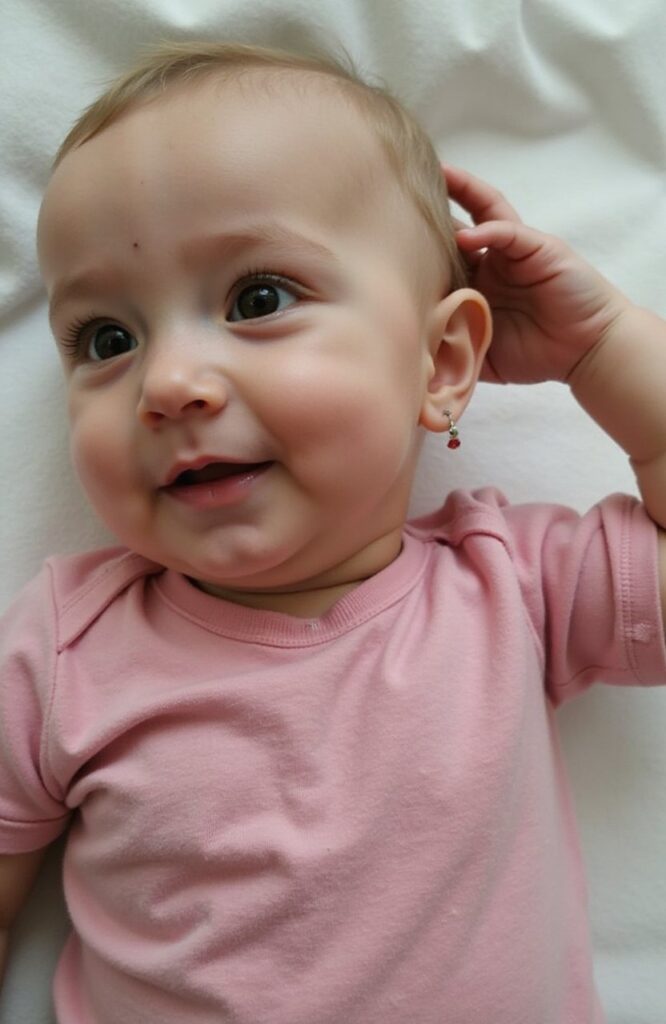
Beyond modern parenting choices, ear piercing represents a deeply meaningful cultural practice in many societies around the world. The cultural significance varies widely:
- In Hindu traditions, Karnavedha ceremonies occur between 3-9 months of age, believed to enhance brain development and ward off negative energy
- Latin American families often pierce infant girls’ ears within days of birth as a feminine symbol
- Middle Eastern and African cultures associate early piercing with family heritage and community belonging
Regional practices reflect deeper meanings:
- Protection from negative energy
- Symbols of identity and family connection
- Spiritual significance and energy flow
- Rites of passage marking survival and community acceptance
For many families, the decision isn’t just about aesthetics—it’s about honoring generations of tradition and cultural identity.
Benefits and Drawbacks of Piercing at Different Ages
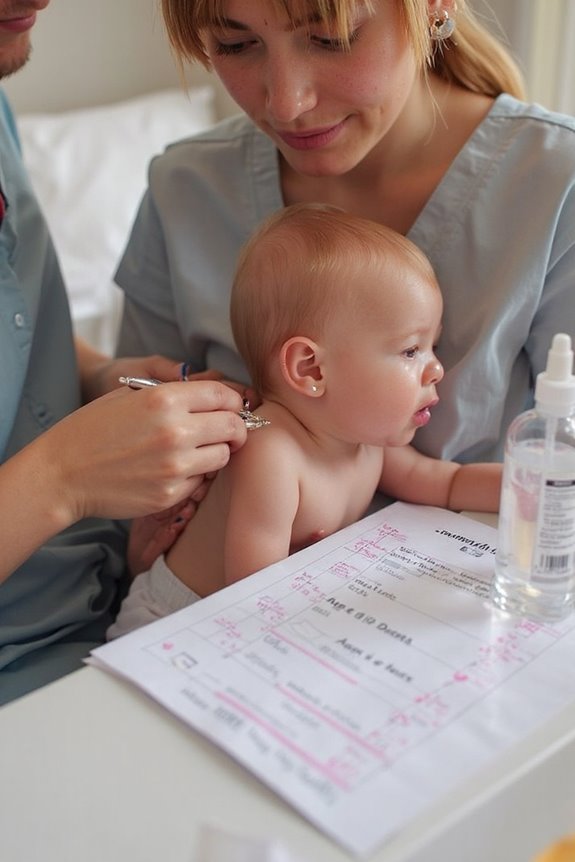
Deciding when to pierce your baby’s ears involves weighing benefits and drawbacks at each developmental stage. One common piercing myth is that babies won’t remember the pain, which isn’t the main consideration.
For infants under 1 year:
- Minimal pulling at earrings aids healing
- Faster recovery due to skin elasticity
- Higher infection risks before vaccinations
For toddlers (1.5-5 years):
- Better understanding of hygiene
- More emotional reactions to the procedure
- Potential for earrings to catch during play
For school-age children (6+ years):
- Independent aftercare management
- Lower choking hazards
- Better comprehension of the permanence
Each age presents unique considerations. I recommend consulting with your pediatrician before making this decision, especially regarding timing around vaccinations and infection prevention.
Vaccination Timeline and Immune System Readiness
While many parents are enthusiastic to pierce their baby’s ears, understanding your child’s immune system development and vaccination timeline is vital before making this decision.
Most pediatricians recommend waiting until your baby is at least:
- 2 months old (after first vaccinations)
- 4 months old (after receiving two tetanus shots)
Your baby’s immune system considerably matures following initial vaccinations at 2, 4, and 6 months. These vaccines, especially tetanus, help build immunity against infections that could enter through piercing sites.
Why vaccination importance matters:
- Newborns have less robust immune responses
- Early vaccinations provide protection against potential infections
- DTaP vaccines help prevent serious complications
I recommend waiting until after your baby has completed their first set of vaccines to guarantee their immune system is better prepared to handle the small wound created by piercing.
Essential Aftercare for Baby Ear Piercings
After your baby has received their vaccinations and you’ve decided to pierce their ears, proper aftercare becomes your top priority. I recommend establishing a consistent cleaning schedule of 2-3 times daily using appropriate aftercare products.
- Wash your hands thoroughly before touching the piercing
- Clean with saline solution or recommended cleanser
- Apply antibiotic ointment twice daily
- Rotate earrings gently during cleaning
The initial healing takes 4-6 weeks, but earrings should remain in place for at least six months. Keep your baby away from swimming pools and other bodies of water during healing.
Watch for signs of infection: redness, swelling, discharge, warmth, or fever (100.4°F/38°C or higher). If these occur, increase cleaning frequency and consult your pediatrician if symptoms persist beyond 24 hours.
Frequently Asked Questions
What Type of Earrings Are Safest for Babies?
Just yesterday, I was considering this! For babies, I’d recommend earrings made of hypoallergenic options like 14k gold or sterling silver. These safety materials minimize allergic reactions while keeping those tiny ears comfortable.
Can Babies Sleep With Newly Pierced Ears?
Yes, babies can sleep with newly pierced ears. I recommend choosing secure, flat-back earrings to guarantee baby comfort during sleep. Just be vigilant about regular cleaning and watch for any signs of irritation.
How Long Does Healing Take for Infant Ear Piercings?
I’d say initial healing takes 6-9 weeks, but complete healing can last up to a year for infant ear piercings. Regular aftercare tips include antibiotic ointment application and gentle earring rotation for ideal healing duration.
Will Ear Piercings Affect MRI Scans Later in Life?
I’d say most ear piercings won’t affect MRI scans if they’re made of MRI-compatible materials like titanium or gold. I recommend considering potential metal allergies when choosing earrings to guarantee long-term safety.
Does Piercing Location on the Earlobe Matter for Babies?
Yes, I believe the piercing location matters for babies. It should respect ear anatomy to avoid cartilage and nerve damage. Some cultural practices favor specific placements, but the lower earlobe is typically safest.

